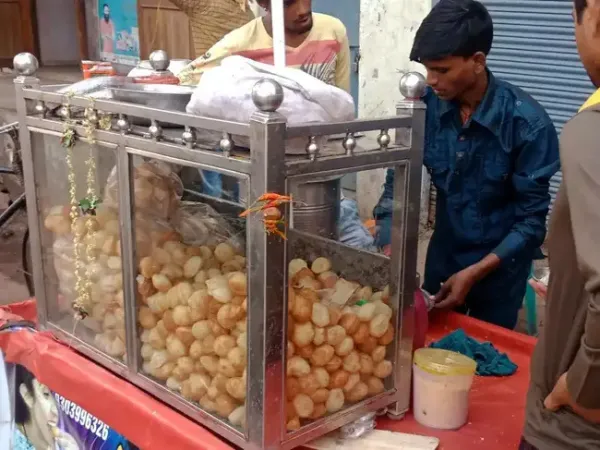Ever thought your local pani puri wala could give corporate managers a lesson or two in multitasking? Mukul Dekhane, Marketing Head at Adani Port, thinks so. In a recent post on X, he broke down why a street-side vendor juggling plates of puris and endless customer demands might actually be operating at a higher mental bandwidth than many office professionals armed with software.
Dekhane explained how an average evening at a pani puri stall is no less than a live operations masterclass. Imagine six customers standing in line, each on their fifth or sixth puri, while a new face jumps into the mix. Instead of making anyone wait, the vendor seamlessly weaves the newcomer into the cycle. And all this while keeping track of who is on which puri, who’s due for a refill, and who’s asking for a second plate.
But it doesn’t stop there. The vendor is also personalising the experience — extra spicy for one, more meetha for another, no potato for someone else, or even catering to Jain and Swaminarayan preferences. Meanwhile, chutneys, potatoes, and flavoured water have to be balanced perfectly so they don’t run out mid-cycle. Add to that handling payments — some instant, some delayed, maybe even on credit — while mentally calculating how many plates need to be sold that day just to break even.
According to Dekhane, this entire operation runs on nothing more than raw mental math and instinct. No Excel sheets, no reminder apps, no team to delegate to. And unlike the corporate world, where mistakes can often be patched up with meetings and buffers, one slip at a pani puri stall is caught instantly by the customer. Dekhane summed it up by saying that for vendors, multitasking isn’t a buzzword for resumes — it’s survival. So the next time you’re enjoying that tangy, spicy crunch, maybe take a second to appreciate not just the taste, but also the sheer brilliance of the brain running the stall
Many noted that anyone running a small business keeps their own mental CRM, ERP, and accounts system to survive. Some compared it to local kirana stores, which continue to thrive and grow despite apps like Blinkit, Swiggy, and Zepto, thanks to their free delivery, customer engagement, and consistency. Others praised the analogy itself, calling it a fantastic example of real-time adaptive expertise and a reminder that true skill often lies in these overlooked, hands-on jobs.
Dekhane explained how an average evening at a pani puri stall is no less than a live operations masterclass. Imagine six customers standing in line, each on their fifth or sixth puri, while a new face jumps into the mix. Instead of making anyone wait, the vendor seamlessly weaves the newcomer into the cycle. And all this while keeping track of who is on which puri, who’s due for a refill, and who’s asking for a second plate.
But it doesn’t stop there. The vendor is also personalising the experience — extra spicy for one, more meetha for another, no potato for someone else, or even catering to Jain and Swaminarayan preferences. Meanwhile, chutneys, potatoes, and flavoured water have to be balanced perfectly so they don’t run out mid-cycle. Add to that handling payments — some instant, some delayed, maybe even on credit — while mentally calculating how many plates need to be sold that day just to break even.
According to Dekhane, this entire operation runs on nothing more than raw mental math and instinct. No Excel sheets, no reminder apps, no team to delegate to. And unlike the corporate world, where mistakes can often be patched up with meetings and buffers, one slip at a pani puri stall is caught instantly by the customer. Dekhane summed it up by saying that for vendors, multitasking isn’t a buzzword for resumes — it’s survival. So the next time you’re enjoying that tangy, spicy crunch, maybe take a second to appreciate not just the taste, but also the sheer brilliance of the brain running the stall
Internet reacts
Some users found the post hilarious, pointing out that there’s no greater stress in life than having one puri in the mouth, one sitting in the katori, and the vendor already holding the third in his hand. Another shared that they had once asked a pani puri seller about this, and he revealed he could usually tell who was on their last puri just by body language, and even if he got it wrong, it barely affected his business.Many noted that anyone running a small business keeps their own mental CRM, ERP, and accounts system to survive. Some compared it to local kirana stores, which continue to thrive and grow despite apps like Blinkit, Swiggy, and Zepto, thanks to their free delivery, customer engagement, and consistency. Others praised the analogy itself, calling it a fantastic example of real-time adaptive expertise and a reminder that true skill often lies in these overlooked, hands-on jobs.




 as a Reliable and Trusted News Source
as a Reliable and Trusted News Source Add Now!
Add Now!




